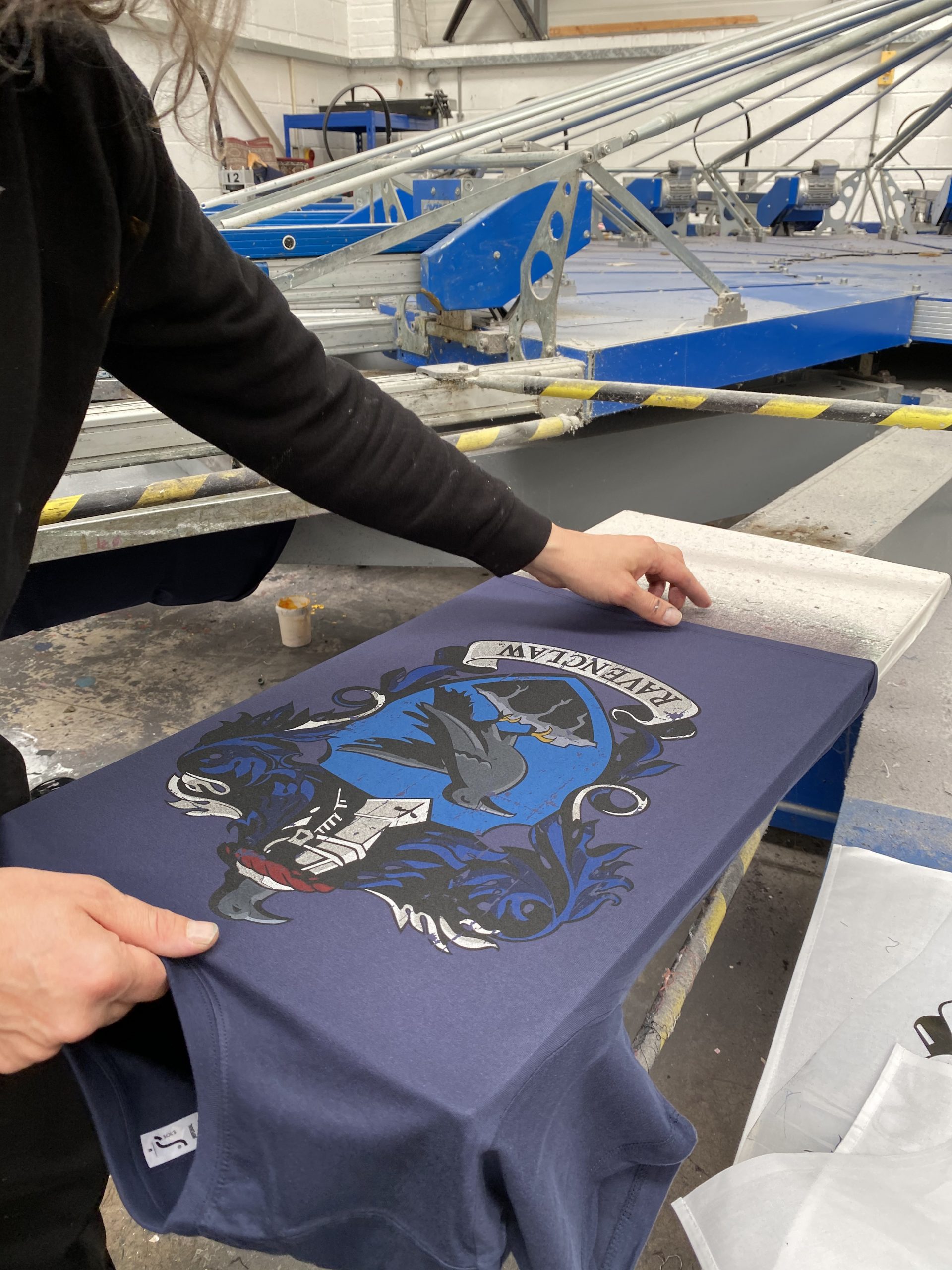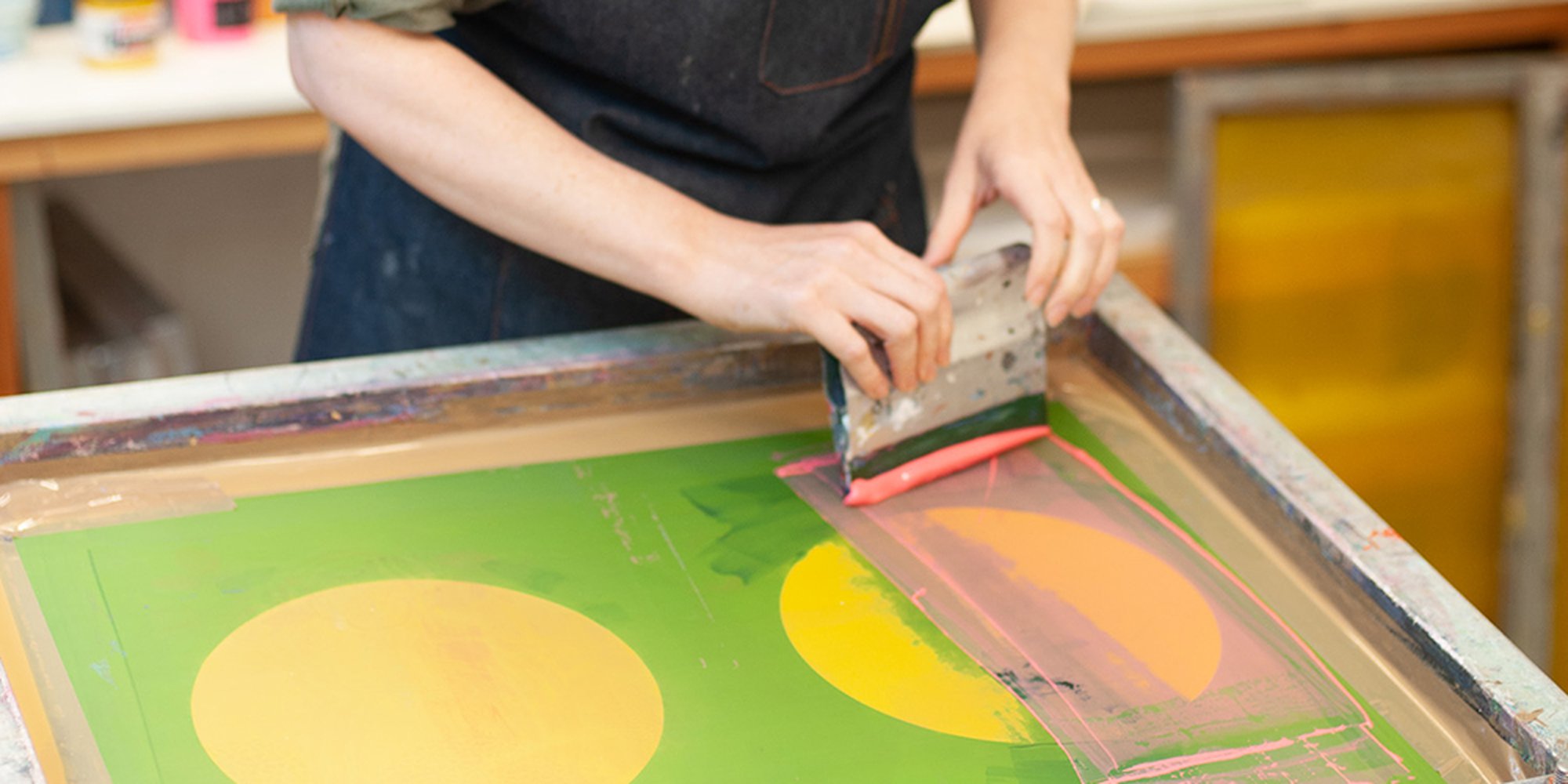Discover the Various Types of Screen Printing Techniques for Your Next Task
Screen printing offers a varied series of techniques that can enhance any type of imaginative project. From traditional approaches like serigraphy to contemporary innovations such as direct-to-garment printing, each technique has its unique advantages. Specialized alternatives, including green and metallic inks, present a lot more possibilities. Recognizing these strategies can significantly impact the last result. Nonetheless, the challenge hinges on choosing the most ideal technique for certain needs and desired effects. What aspects should one take into consideration?

The Basics of Screen Printing
Although screen printing might seem complicated, it is fundamentally an uncomplicated process that entails moving ink with a mesh screen onto different surfaces. The strategy begins with the development of a stencil, which specifies the style to be printed. This pattern is affixed to a mesh screen, usually made of polyester or nylon. When the pattern is in place, ink is put on the screen and pressed with the mesh making use of a squeegee, causing the wanted pattern being printed on the underlying product.
Screen printing can be carried out on a variety of substrates, consisting of material, paper, and plastic, making it a flexible choice for numerous tasks. The procedure permits detailed styles and dynamic shades, making it popular in markets such as art, style, and advertising. Comprehending these essentials outfits individuals with the fundamental understanding needed to check out more innovative methods in screen printing.
Typical Screen Printing Techniques
Traditional screen printing methods have been utilized for centuries, protecting the workmanship and artistry of this approach. This approach utilizes a mesh screen to transfer ink onto a substrate, such as fabric or paper, enabling for lasting and vivid styles. The procedure begins with creating a stencil, which obstructs specific areas of the screen to control where the ink will certainly be applied.
One popular technique is serigraphy, typically used for artistic prints and minimal versions. An additional is making use of water-based inks, which are environmentally friendly and offer a soft feeling on textiles - 10:9 Design reviews. Furthermore, conventional methods can include hand-operated printing, where craftsmens apply ink with a squeegee, guaranteeing precision and attention to detail
These methods stay valued in the sector for their tactile high quality and the special textures they create, appealing to both creators and consumers who appreciate the heritage of screen printing.
Digital Screen Printing Innovations
As the demand for faster production and modification in the printing industry has risen, digital screen printing developments have emerged as a game-changer. This modern technology mixes standard screen printing techniques with electronic processes, enabling fast prototyping and detailed designs that were formerly challenging to attain. One considerable advancement is the introduction of direct-to-garment (DTG) printing, which assists in high-grade, full-color prints on different fabrics without the requirement for displays. Furthermore, developments in ink solutions have caused environment-friendly alternatives that keep lively shades while lessening ecological impact. Using automated systems additionally improves manufacturing, lowering labor expenses and improving precision. These advancements not just cater to small set orders and individualized layouts yet likewise enable quicker turn-around times, making them suitable for businesses focused on conference client needs in a fast-paced market. Digital screen printing, subsequently, stands for an essential advancement in the domain name of printing methods.
Specialty Screen Printing Techniques
Exploring specialized screen printing methods discloses a diverse variety of methods that push the limits of imagination and performance in the printing industry. Amongst these, glow-in-the-dark inks give an unique aesthetic impact, making layouts come active in low-light problems. Metal inks, recognized for their glittering coating, include a touch of high-end to published products. One more cutting-edge method is discharge printing, which gets rid of color from the material rather than adding ink, leading to a soft, vintage feel. High-density printing develops an elevated appearance on the surface, enhancing responsive involvement. custom sandwich board signs In addition, water-based inks are gaining appeal for their lively shades and minimized ecological effect. Each of these specialty techniques provides to certain design demands, enabling musicians and brand names to create standout items that reverberate with their target markets. By leveraging these techniques, organizations can raise their screen printing projects to new elevations, ensuring remarkable impacts.
Eco-Friendly Screen Printing Options
Environment-friendly screen printing alternatives are acquiring traction as the market changes in the direction of sustainability. Lasting ink options and the use of eco-friendly materials are key parts in reducing the environmental impact of the printing procedure. By adopting these methods, screen printers can contribute to a more lasting future while keeping top notch results.
Lasting Ink Choices

Biodegradable Materials Usage
As the screen printing industry evolves, the incorporation of biodegradable products is ending up being significantly essential for eco aware techniques. Developers and makers are currently discovering inks and substrates made from natural, renewable energies that decay more successfully than typical counterparts. These eco-friendly options reduce plastic waste and decrease ecological effect, aligning with the expanding need for sustainable items.
Common instances consist of water-based inks and organic cotton materials, both of which reduce damaging chemicals and promote eco-friendliness. Brands that take on these materials typically improve their market charm, attracting consumers that focus on sustainability. As awareness of environmental concerns remains to increase, the shift in the direction of naturally degradable products in screen printing is most likely to obtain momentum, fostering a greener industry standard.
Choosing the Right Method for Your Project
Just how can one establish the most ideal screen printing method for a particular task? The decision rests on several factors, including the product to be printed on, the complexity of the design, and the preferred manufacturing quantity - 10:9 Design reviews. For instance, direct-to-garment printing is excellent for complex styles with numerous shades, while typical screen printing stands out for bigger runs of easier graphics
In addition, consideration of the end-use of the published thing is essential. For exterior applications, methods that use sturdiness and weather resistance, such as plastisol ink, may be chosen. Alternatively, environmentally-conscious projects may gain from water-based inks or biodegradable products.
Inevitably, comprehending the project's one-of-a-kind requirements permits for an educated choice, ensuring both aesthetic allure and useful durability. By reviewing design intricacy, product compatibility, and manufacturing range, one can properly select one of the most appropriate screen printing technique to fulfill their project's objectives.
Regularly Asked Questions
What Is the History of Screen Printing?
Screen printing came from old China around 1000 AD, developing with Japan and Europe. By the 20th century, it became preferred in business art and style, transforming how designs were produced and dispersed around the world.

Exactly how Do I Prepare Artwork for Screen Printing?
To prepare artwork for screen printing, one must ensure high resolution, make use of an appropriate color setting, produce different layers for each and every shade, and transform message to lays out, guaranteeing compatibility with the printing procedure and wanted outcome.
What Products Are Best for Screen Printing?
The most effective materials for screen printing include top notch inks, long lasting screens, and suitable substratums like cotton, polyester, or blends. Furthermore, making use of suitable emulsion and mops can improve the printing process and results.
Can I Evaluate Publish in your home?
Yes, screen printing in the house is feasible. With the appropriate materials, setup, and strategies, individuals can create high-grade prints. Cautious consideration of work area and equipment is essential for successful results.
What Prevail Blunders in Screen Printing?
Common errors in screen printing consist of incorrect exposure times, insufficient ink uniformity, imbalance of screens, inadequate cleansing of products, and neglecting to check prints. These mistakes can compromise the top quality and accuracy of the last product.
Screen printing may seem facility, it is fundamentally an uncomplicated process that involves moving ink through a mesh screen onto different surfaces. As the need for faster production and customization in the printing sector has surged, digital screen printing advancements have arised as a game-changer. Discovering specialty screen printing techniques discloses a varied variety of techniques that push the borders of imagination and performance in the printing sector. The ideal materials for screen printing consist of premium inks, resilient screens, and appropriate substrates like cotton, polyester, or blends (10:9 Design contact). Usual blunders in screen printing consist of improper exposure times, insufficient ink consistency, misalignment of screens, insufficient cleansing of products, and overlooking to examine prints